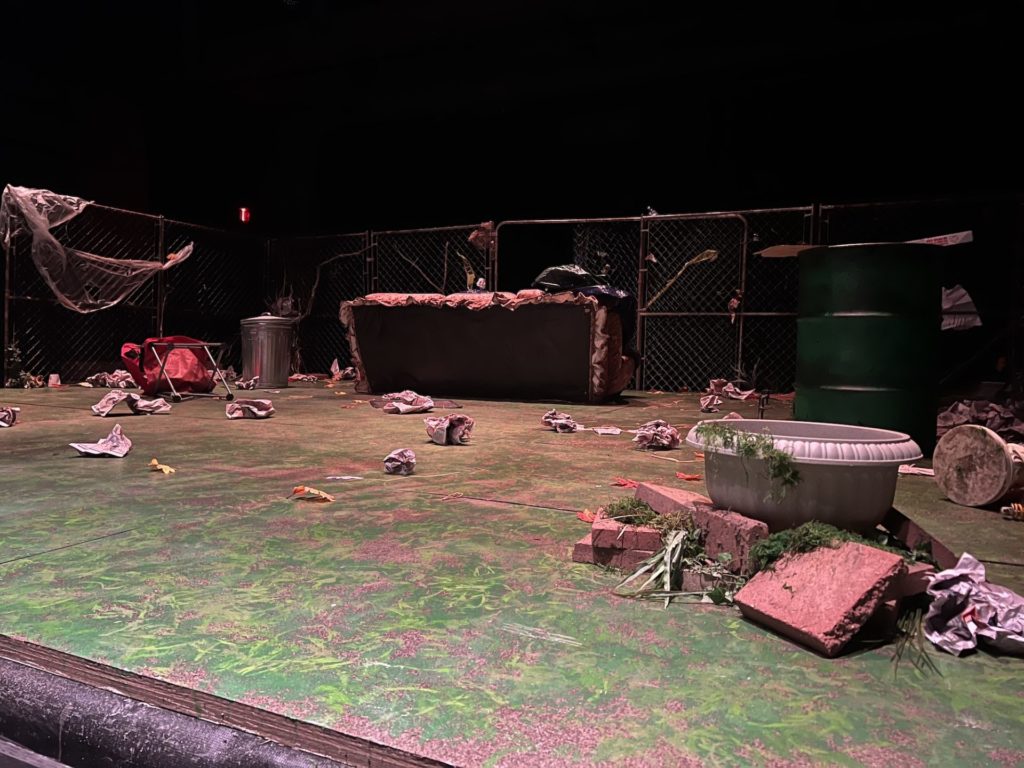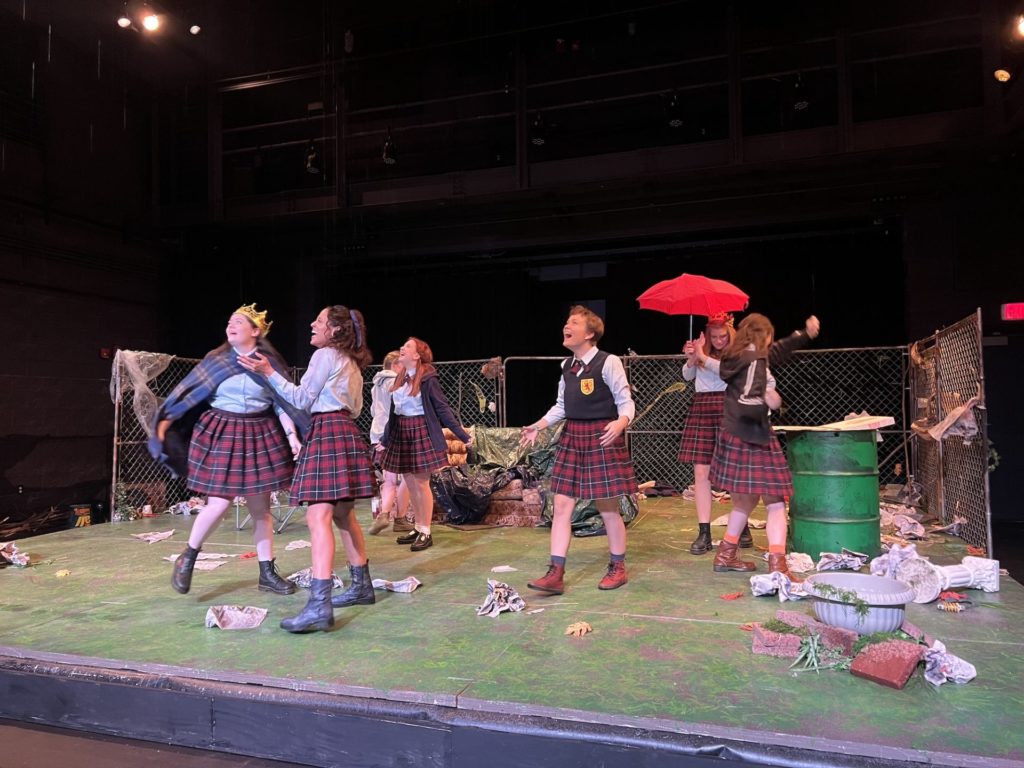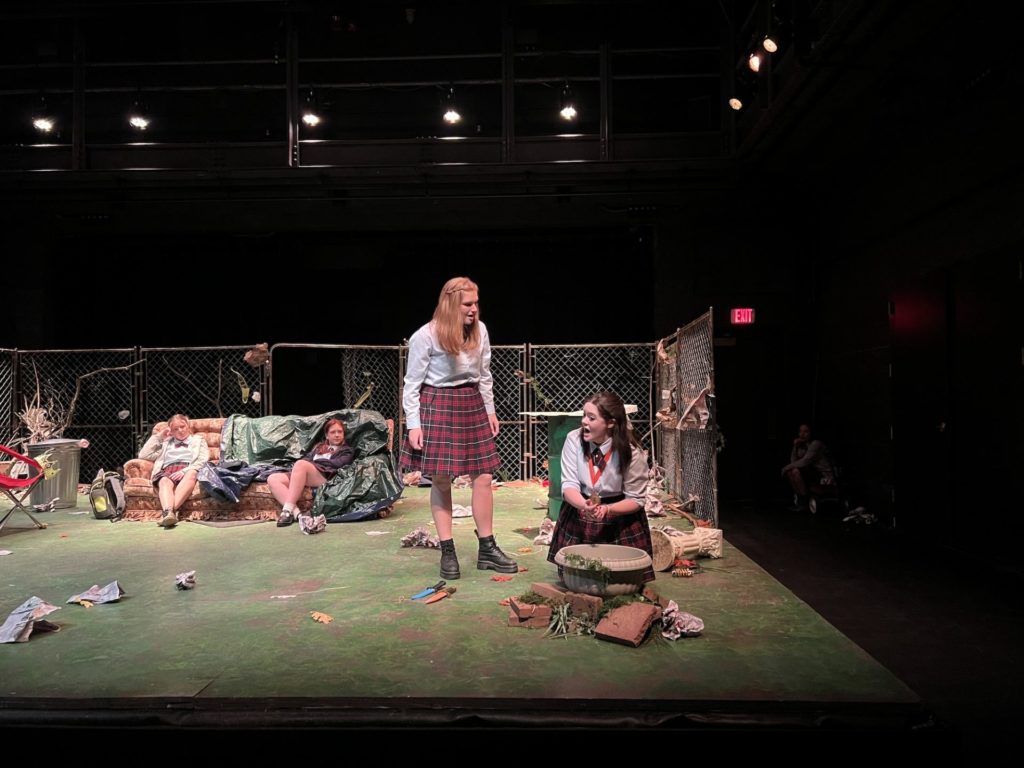Shakespeare’s MacBeth lends itself well to creative re-imaginings. Alan Cummings performed the play as a one-man show set in a psychiatric unit. A 2010 film adaptation starring Patrick Stewart set the film in 1960s Romania with the witches replaced as nurses. I once saw a performance of the play at Brooklyn Academy of Music where the actors all wore solid black, and there was no set or props. A case can be argued that The Lion King is also a reimagining of MacBeth (yes, the Disney movie). All of this is to say, there are a whole lot of ways to do MacBeth.
Mac Beth — space intentional — staged this past weekend at Parkland and directed by Mathew Green, set the Shakespeare classic in an abandoned lot, with the play performed by a group of teenage girls wearing their prep school uniforms: a play within a play.

Mac Beth isn’t quite a reimagining — it’s almost entirely faithful to the original text. Unlike the version of Titus Andronicus that I reviewed earlier this summer, in which scenes from the Shakespeare play were accompanied by scenes from the frame narrative (we were shown the actors preparing and rehearsing lines and discussing the plot of Titus); Mac Beth dove right into the Shakespeare text with the first line. In fact, it wasn’t entirely clear to me for a bit whether this was a play within a play or not. I kept waiting for the actors to break out of the play, which only clearly happens twice: when a witch asks another witch where she obtained a prop and she answers, “from Science class” [duh]; and again when rain breaks out and the students shriek in delight while grabbing umbrellas.

This adherence to the original text is deliberate, of course. The lines between reality and Mac Beth and MacBeth are blurred. As the girls come and leave the lot, you can still see them behind the open fence, drinking water, texting. Are we supposed to see them? Is this part of it? It is, of course.
The play opens with one of the actors coming on to the abandoned lot, listening to music and texting. The sound of the music gradually gets louder as the girl approaches the lot; we are hearing what she is hearing through her airpods. As the other girls make their way to the set, the play begins, with no discussion, as though this isn’t the first time they have done this. When Lady Macbeth first enters, we see her reading the script off to the side, the first real indication of the parameters of this reimagining. The girls are all wearing their school uniforms, the props are pulled from their backpacks or found on the lot. They have cheap crowns, a sword made from foam; during a banquet they eat chips and twizzlers. The witches put their hoods on their sweatshirts up to convey their witchiness. Everything you would expect from a group of high school kids staging Shakespeare after school.
Whenever a classic is presented in a new way, you should question why — what does this new version do for the original text? In this case, what happens to the text when it’s staged by prep school girls? One of the most brilliant things about doing MacBeth with an all-female cast is how it plays with the very gendered language of the play. I hadn’t realized how much “be a man” dialogue there was until it was spoken in this type of a setting. It’s partially amusing, having a female Lady MacBeth give this speech to a fellow female MacBeth as she implores him he would be more of a man if were to kill the king, but it also invites the viewer to question ideas about masculinity, and what the play is really about — power.
Shakespeare delivered poorly is not a great experience, and the actors here all thankfully did the play justice. Julia Clavadetscher’s Lady M is particularly memorable. Her scenes with Guinevere Brown’s MacBeth were some of the best of the play. They were passionate and convincing, and had outstanding chemistry playing off of each other perfectly. I also greatly enjoyed Kimmy Schofield’s Banquo, particularly the creepy and unsettling ghost version.

Spoilers ahead.
Now, you may be wondering why I included a spoiler warning for a play that stays faithful to the original text of the Shakespeare classic. The play’s final turn features a shocking ending, outside of the text of MacBeth. As the three witches gather around a cauldron, the viewer catches sight of knives. They are different than the other props, and you can sense in the theatre that something has shifted. I won’t give away precisely what happens, but the lines between reality and fiction are blurred, for the actors within the play, as well as for the viewer who is likely to recall a recent famous trial involving teenage girls who likewise claimed to confuse fiction and reality. I do wish this adaptation by Erica Schmidt gave more context; we don’t know anything about the students or what provokes this final turn of events. But, at the same time, those unanswered questions arguably make the play more memorable and certainly more thought-provoking. I imagine that I will never again think of MacBeth without recalling this surprising adaptation and how completely unsettled I felt leaving the theatre.
Mac Beth
Parkland’s Second Stage
2400 W Bradley
Champaign
Oct 6–8
F + Sa 7:30 p.m.
Su 3 p.m.
$15-20








